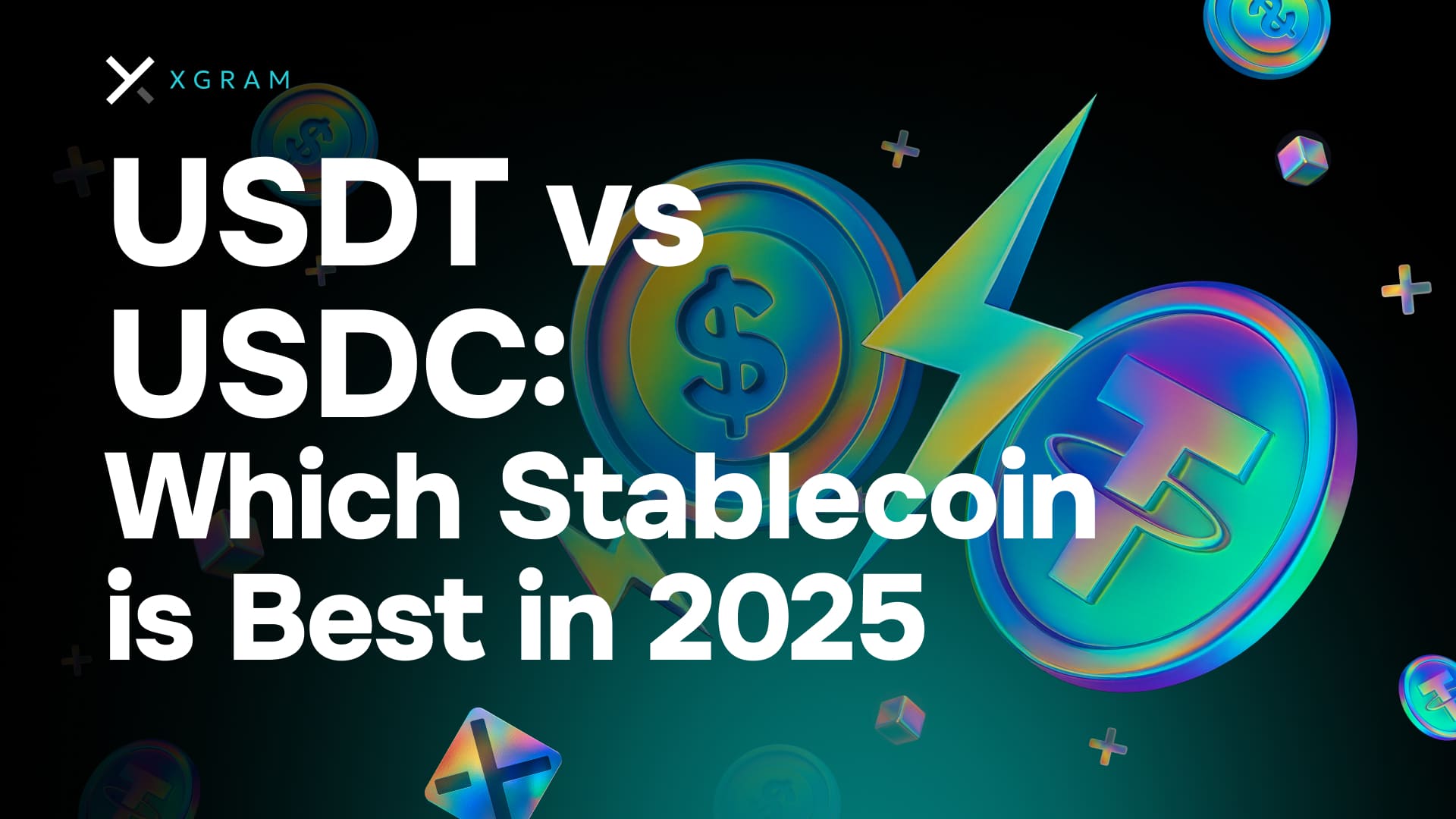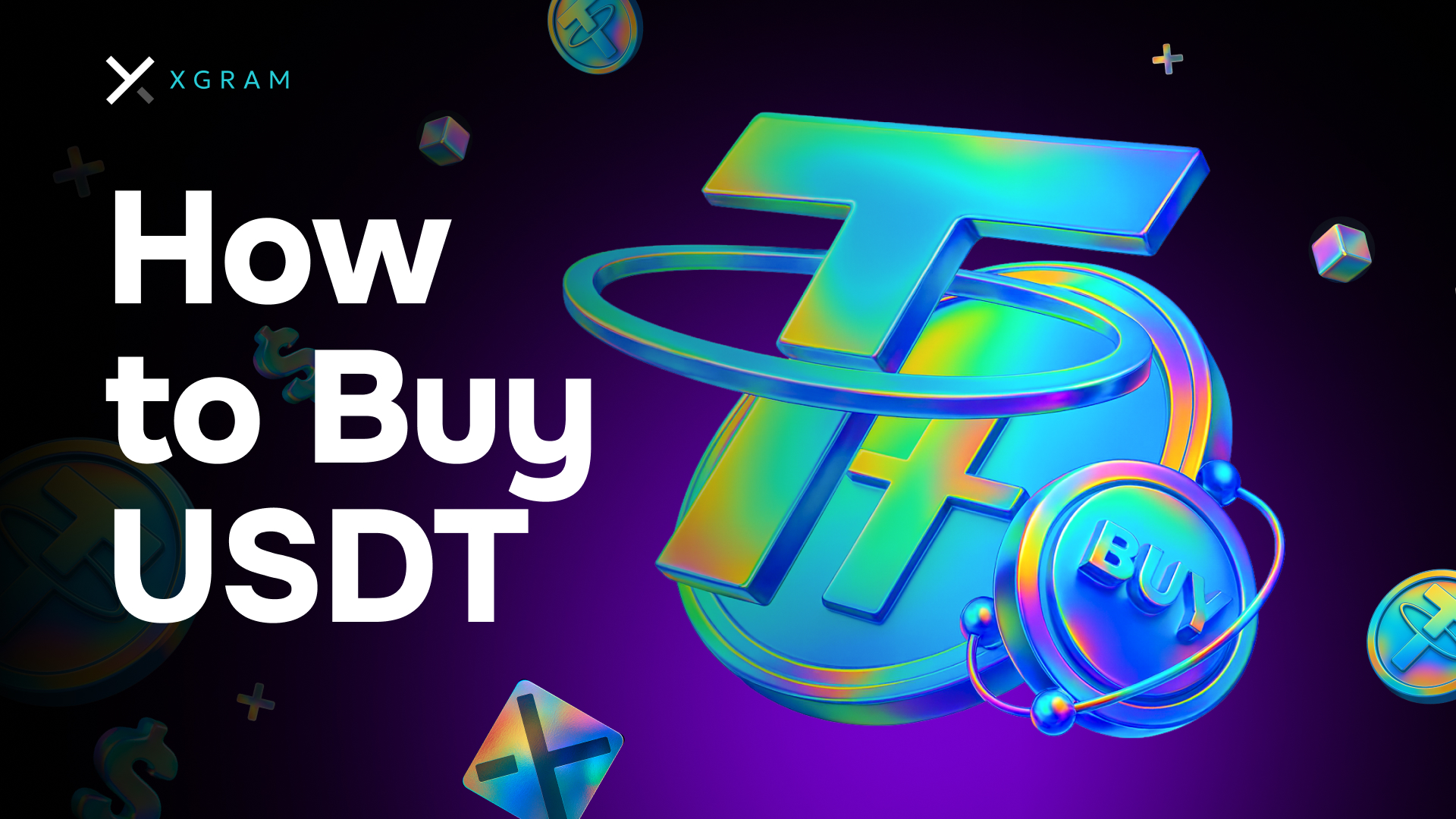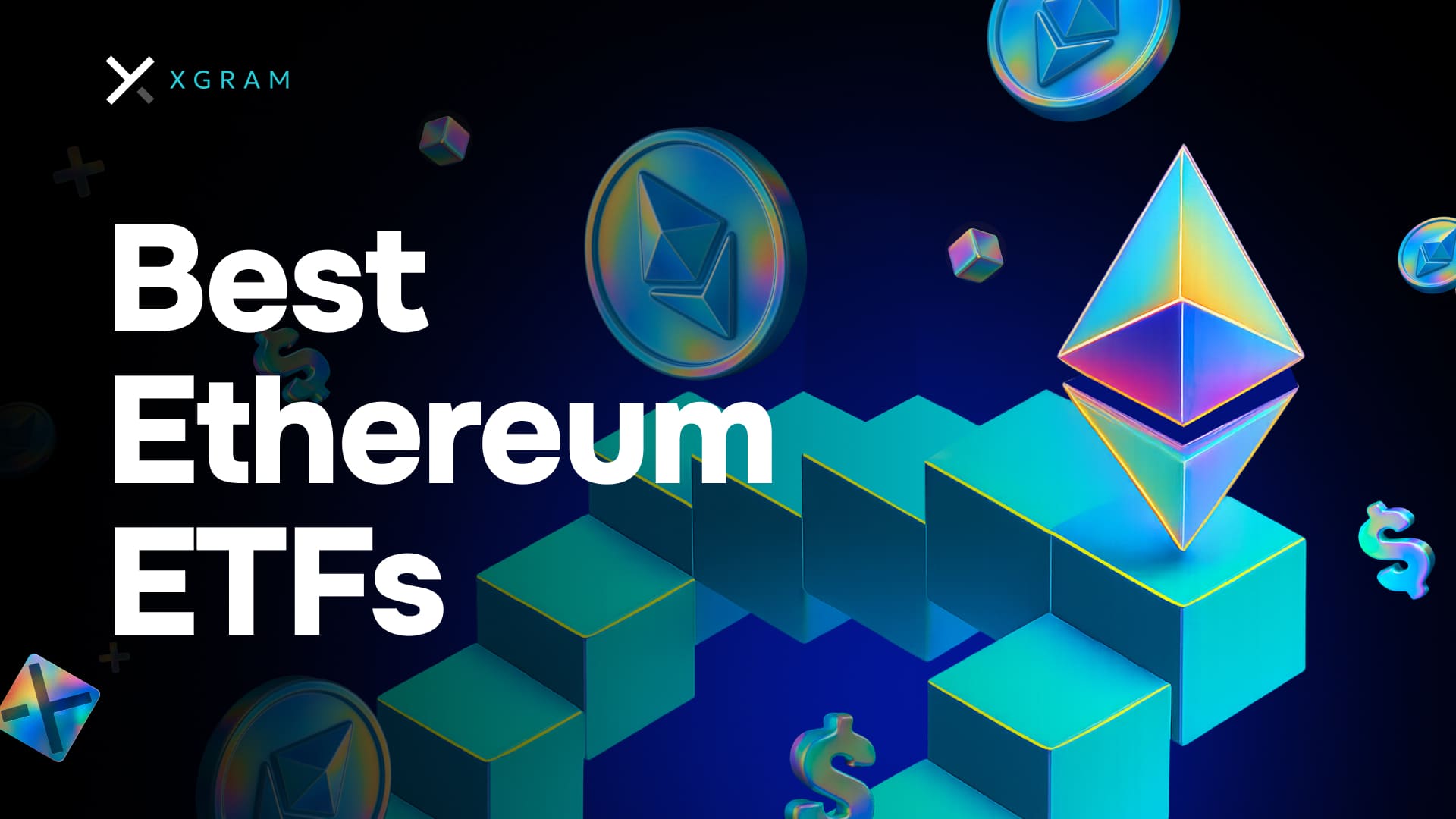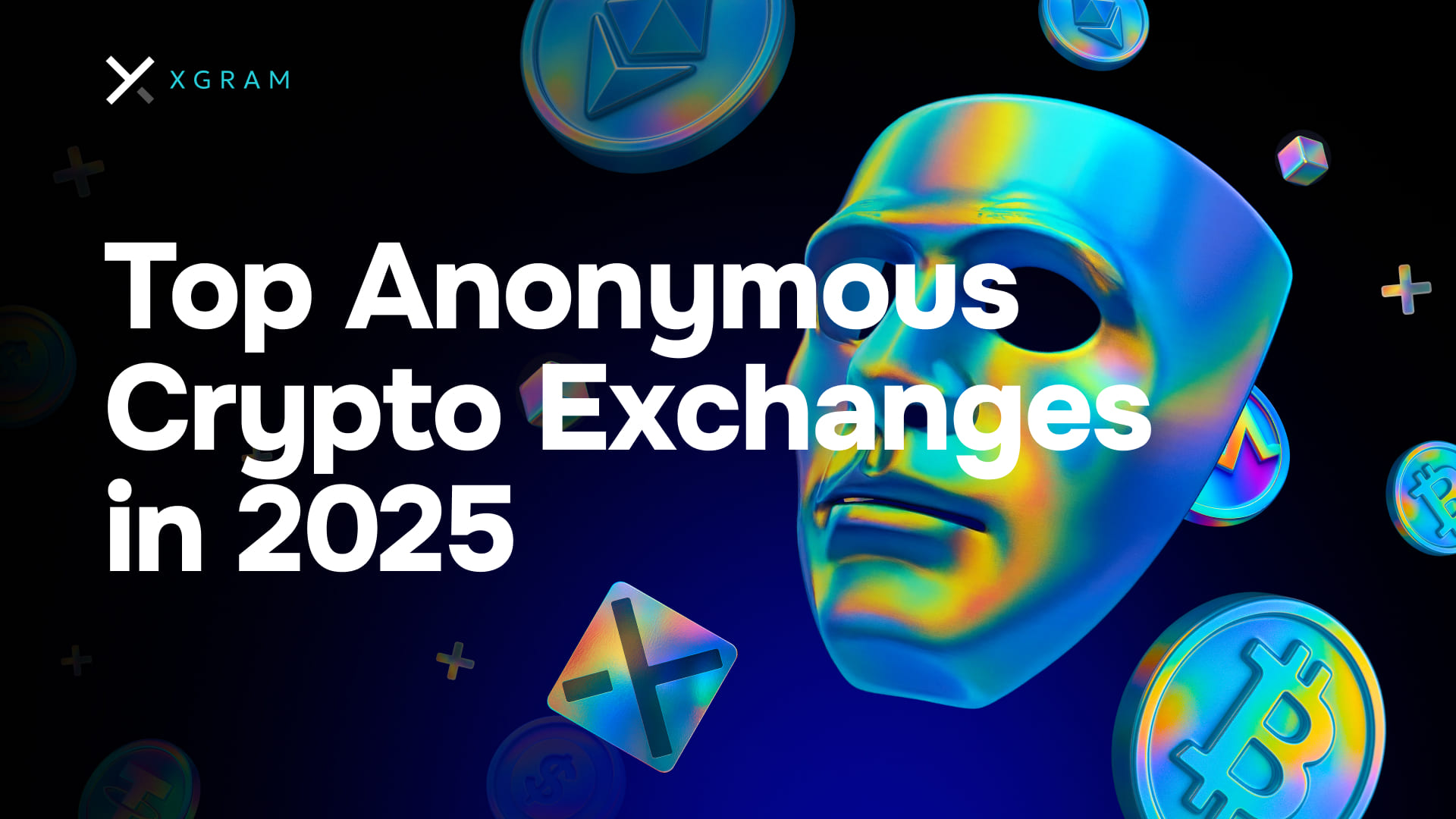Many cryptocurrency traders and everyday users compare “usdt vs usdc” to figure out which stablecoin might best suit their needs. Both stablecoins maintain a 1:1 peg to the US dollar, aiming to deliver price stability in the volatile crypto market. Some analysts note that stablecoins help soften the impact of sudden market swings, which is why so many individuals turn to these assets as a foundation for trading and storing value. Yet, each stablecoin carries distinct features related to liquidity, security, regulatory compliance, and real-world utility. By understanding these differences, it becomes easier to make an informed, confident decision about which option might be a better fit in 2025 and beyond.
Xgram lets you swap USDT to USDC and beyond — with zero registration or KYC. Choose from 10,000+ pairs backed by hundreds of trusted reviews.
Compare stablecoins USDT vs USDC
Stablecoins such as Tether (USDT) and USD Coin (USDC) are built to keep their price anchored to the US dollar. They also exist on multiple blockchain networks, including Ethereum, TRON, and more. Although USDT and USDC share the same fundamental goal of reducing crypto price volatility, their structure and ecosystem backing can influence how well they hold their peg under different market conditions.
A look at Tether’s USDT
Tether, commonly known as USDT, appeared on the market in 2014. Its early presence established it as the most traded stablecoin in volume terms for several years. Traders often gravitate toward USDT because it typically has strong liquidity on major exchanges. The issuing company is Tether Limited, and it claims each token is fully backed by reserves in various forms, including cash equivalents, short-term deposits, and other assets.
Tether’s growth was fast, but it also attracted scrutiny. Observers have questioned Tether’s transparency, leading to multiple public requests for more detailed auditing of its reserves. Tether Limited does provide attestations from accounting firms, but critics note these attestations are not the same as a full audit. Despite these reservations, Tether’s large market presence has kept it near the top of stablecoin rankings by market capitalization.
A look at USD Coin
Launched in 2018, USD Coin (USDC) is managed by Circle, a financial technology company based in the United States. Circle collaborates with various partners, among them regulated financial institutions. The development team designed USDC with a strong emphasis on compliance and clear reserve disclosures. Supporters of USDC appreciate its monthly attestations, which show that each USDC token is backed by fully reserved US dollars or US dollar equivalents stored in regulated US bank accounts and short-term US Treasuries.
USDC’s brand identity builds on the idea of reliability and trust. Many large financial institutions and payment processors see USDC as a credible stablecoin that aligns with evolving regulations. As a result, USDC is commonly used among businesses funding blockchain projects or powering cross-border transactions in a compliant way. Even though it may not always reach the same trading volume as USDT, USDC tends to see strong demand in DeFi platforms and mainstream payment solutions.
Check liquidity and adoption
Liquidity refers to how easily a token can be exchanged for other assets without causing large price movements. In practical terms, a stablecoin with higher liquidity on major exchanges generally promotes faster, cheaper trades. Adoption signifies how widely integrated that stablecoin is, including acceptance in peer-to-peer markets, DeFi apps, and non-custodial wallets. Individuals who swap assets frequently pay close attention to both factors.
Trading volumes across exchanges
Tether (USDT) usually holds first place in terms of trading volume. According to historical exchange data, USDT is often the most traded crypto asset after Bitcoin. High liquidity can lead to narrower price spreads, which can be beneficial to frequent traders who aim to minimize slippage. For those who prefer no-KYC environments, USDT typically appears on many decentralized and non-custodial exchanges, creating a wide array of possibilities for rapid swaps.
USD Coin (USDC), while typically second to Tether in raw volume, maintains fairly deep liquidity across major centralized exchanges and decentralized platforms. Important DeFi protocols, such as lending or yield-farming services, often highlight USDC pairs for borrowing and lending. Even if that volume lags behind USDT’s, USDC boasts a reputation for compliance. This encourages some regulated exchanges to offer especially efficient USDC payouts and conversions.
Usage in decentralized finance
DeFi platforms that run on Ethereum, Polygon, and other blockchains rely heavily on stablecoins for lending, borrowing, and staking. In some top DeFi applications, USDC is chosen as a primary collateral asset since developers trust that Circle’s monthly reserve attestations lower the risk of unexpected depegging. Tether, on the other hand, is also widely accepted, but certain DeFi protocols might reduce its weighting in risk parameters due to the perceived uncertainty around Tether’s reserve audits.
Nonetheless, many liquidity pools pair both USDT and USDC with other tokens, letting users supply liquidity and earn trading fees. These pools still enjoy large trading activity, so individuals who regularly swap assets may find both stablecoins readily available. Overall, those who frequently move funds across blockchains are unlikely to face problems using either token, as each is recognized throughout the crypto ecosystem.
Evaluate regulation and transparency
Even though stablecoins are designed to remain at $1, regulatory scrutiny and transparency can influence how stably they hold that peg. Each stablecoin project handles compliance differently, and the laws around stablecoins continue to evolve in multiple jurisdictions.
Tether’s approach
Tether’s issuer is registered in the British Virgin Islands, and the company states it conducts business in accordance with local regulations. However, Tether has faced questions about the true nature of its reserves. Over the years, Tether Limited has resolved investigations and settlements with regulatory bodies, but the outcomes have not always answered every concern. Some critics believe Tether’s structure across multiple legal entities complicates transparency.
On the flip side, Tether’s global presence and deep market adoption mean many individuals keep using it. Tether remains stable enough that it rarely loses its peg, but occasional market events do cause temporary dips. Critics keep an eye on Tether’s solvency, while advocates argue its track record suggests it will maintain a stable $1 peg as long as demand remains high.
USDC’s compliance record
Circle, the company behind USDC, is based in the United States and adheres to US laws on money transmission. Circle’s partnerships with regulated financial institutions create confidence about USDC’s backing, because the reserves are typically held in strictly regulated environments. Circle also publishes monthly attestation reports from third-party auditors. These appear on Circle’s website, showing details about the US-dollar and US Treasury holdings that secure every coin in circulation.
For individuals who want maximum transparency and prefer a stablecoin that cooperates with regulatory frameworks, USDC may appear more reassuring. However, some privacy-focused crypto users express concern that Circle’s alignment with regulations could open the door to blocking or freezing addresses at the request of authorities. Though these incidents are not common, it remains a possibility given Circle’s compliance obligations.
Examine transaction fees and speed
Stablecoins circulate on a range of public blockchains, so transaction fees and final confirmation speed can differ widely. Neither USDT nor USDC can strictly dictate how an underlying network (like Ethereum or TRON) sets gas fees or block times.
Ethereum-based tokens
When individuals transact with ERC-20 tokens on Ethereum, gas fees can spike if the network is busy. During peak usage, the cost of a single stablecoin transaction might become higher than expected, making small value transfers less appealing. For example, if someone using USDC or USDT wants to move small amounts quite often, high fees could add up.
Many no-KYC decentralized exchanges run on Ethereum, so some users might pivot to second-layer solutions or alternative networks to reduce costs. In those situations, bridging stablecoins from Ethereum to another chain can help lower fees, though the bridging process itself can be complex.
Alternative networks
Tether extends beyond Ethereum. It issues tokens on TRON, Binance Smart Chain (BSC), and other blockchains featuring faster confirmation times and lower transaction costs. Many individuals prefer to trade or withdraw USDT on TRON because the fees are negligible. This can be convenient for persons who move assets frequently or for those who favor non-custodial wallets that integrate TRON-based tokens.
USDC is likewise supported on multiple blockchains, including Solana and Polygon. These networks typically deliver quick transactions at minimal cost. Since USDC is minted by Circle with cross-chain compatibility in mind, multi-chain wallets and DeFi platforms often integrate USDC pairs readily. Thus, an individual deciding between USDT and USDC might consider which networks each token supports, how quickly transactions settle, and how network fees impact typical usage patterns.
Assess security measures
Security in the context of stablecoins involves the reliability of their smart contracts, the design of their underlying reserves, and the measures each issuer has in place to protect holders. Non-custodial wallets also play a role, since individuals seeking maximum control over their funds often store stablecoins there.
Smart contract safety
Both Tether and Circle rely on well-audited smart contracts for each blockchain they support, although the level of review can vary. Ethereum-based implementations tend to be heavily scrutinized, since liquidity is high and many DeFi protocols interact with these contracts. Likewise, Tron-based and Solana-based versions undergo some security reviews, but the extent of auditing can differ.
There have been no widely documented smart contract exploits that specifically compromise user funds in USDT or USDC. Still, any potential vulnerability in a stablecoin’s code or the bridging process from one chain to another could pose a risk. In general, USDT and USDC both enjoy strong reputations for contract integrity.
Legal and collateral assurances
Security also covers the ability of an issuer to redeem stablecoins 1:1 for US dollars. Tether has historically managed redemption through select partners. Critics sometimes question whether Tether could satisfy all redemption requests during extreme market conditions. Tether supporters counter that Tether has never failed to redeem or pay out large sums in the past.
USDC, being more tightly regulated, is generally perceived as safer for large-scale redemptions. Circle’s transparent reserve structure reassures many institutional clients, which is why big players in crypto finance often trust USDC for their day-to-day treasury operations. On the other hand, individuals who prioritize decentralized approaches and are not reliant on official redemption processes may not find these institutional factors as critical in everyday swapping.
Weigh fees and transaction speed
Fees come from several sources when dealing with stablecoins. Exchanges can charge deposit or withdrawal fees. Network gas costs fluctuate based on chain usage, and certain platforms may have their own transaction costs. Speed is equally vital. High-velocity traders often want near-instant confirmations, while more casual users may value reliability over raw speed.
Broker fees versus network fees
Centralized exchanges typically set a flat fee (or a percentage) on USDT or USDC deposits and withdrawals. Sometimes, the fee for USDT is slightly lower or higher than for USDC, depending on the exchange’s agreements or the blockchain used. Over short intervals, these fees might not matter much, but frequent traders could see costs accumulate if they jump in and out of positions several times a day.
Decentralized platforms rely on on-chain transactions. Therefore, the network’s condition determines the final cost. For instance, using USDC on Ethereum during a mempool spike might result in a costly transaction. Swapping USDT on Tron, however, may be far cheaper during that same time.
Speed considerations
Those using stablecoins on faster blockchains, like Solana or Tron, can finalize transfers in seconds with minimal fees. As a result, USDC on Solana and USDT on Tron have both gained popularity. Some no-KYC exchanges also integrate direct withdrawals on these networks, appealing to individuals who want quicker settlement. Although Ethereum-based USDT or USDC can experience slower confirmations and higher fees, it remains a standard channel for accessing many DeFi protocols. Traders must balance performance, cost, and which ecosystems they plan to join.
Decide which stablecoin fits best
Selecting the right stablecoin is not a one-size-fits-all choice. Cryptocurrency users who stay vigilant about privacy, manage funds in non-custodial wallets, and look for minimal friction often evaluate several practical factors before settling on a stablecoin strategy.
Focus on privacy
Both USDT and USDC operate on public blockchains, so transaction details are visible to anyone scanning a blockchain explorer. However, Circle (the USDC issuer) openly complies with regulations and may freeze addresses if required by law. Tether also has the ability to blacklist addresses, though it typically does so less frequently than Circle. Individuals who prioritize maximum privacy may look to decentralized protocols or no-KYC exchanges that do not require personal information. In such settings, USDT is often available, and sometimes it is the main stablecoin of choice.
Privacy-minded individuals often consider the extent to which an issuer might be compelled to track or block certain transactions. Both stablecoins comply with authorities at times, but Circle’s stronger compliance posture might trigger more rigorous blacklists under certain legal mandates. For those specifically hoping to minimize such interventions, Tether sometimes appears more flexible, although it still retains the right to block addresses when mandated.
Prioritize asset speed and usage
Frequent traders and high-speed arbitrageurs usually put liquidity first. They tend to gravitate toward USDT because of its high trading volume, especially on large centralized exchanges. Day traders often want the smallest price spreads, and USDT’s global acceptance helps them enter and exit positions quickly.
Individuals who prefer stablecoins as collateral in DeFi might choose USDC thanks to its strong presence on lending platforms and advanced auditing. In decentralized ecosystems, USDC has cultivated a reputation as a more “institutional-grade” token, so big protocols sometimes offer better yields for those who lock in USDC. Every platform is unique, though, so it is wise to review reward rates and deposit requirements carefully.
Manage risk and redemption
The choice might also hinge on one’s trust in each issuer’s redemption policies. Circle’s close ties to US traditional banking reduce doubts for those who might one day redeem large sums for fiat. Conversely, Tether’s approach, while often criticized, has yet to falter at scale, so many users see it as proven by experience. They note that Tether’s peg typically remains stable, even during market downturns.
A balanced perspective acknowledges that both stablecoins can lose their peg under extreme volatility. USDC slightly de-pegged in early 2023 after concerns about Circle’s banking partners, while Tether saw momentary dips in uncertain markets. Neither stablecoin is 100% free from risk, but they maintain a reputation for rebounding to $1 fairly quickly.
Quick comparison table
A straightforward table can help summarize the core differences between these two leading stablecoins. While each category shows typical traits, specific experiences can vary by exchange or network.
Factor | Tether (USDT) | USD Coin (USDC) |
Issuer | Tether Limited (British Virgin Islands) | Circle (United States) |
Reserve transparency | Publishes attestations, full audits not provided | Monthly third-party attestations posted publicly |
Regulation stance | Operates globally, settled disputes in the past | Complies closely with US laws and financial partners |
Main use cases | High-volume trading, wide exchange availability | DeFi collateral, institutional transactions, US-based compliance |
Network availability | Ethereum, Tron, BSC, and others | Ethereum, Solana, Polygon, and others |
Liquidity | Typically the highest in stablecoin space | Second-highest liquidity but still considerable |
Possible blacklisting | Can blacklist when mandated, less frequent | Cooperates with authorities, known to blacklist addresses |
Redemption policy | Issuer redeems, critics ask about full backing | Circle redeems 1:1, showcases robust US dollar reserves |
Ideal for | Frequent exchanges, wide cross-chain usage | Confidence in regulatory oversight, strong DeFi integration |
Final recap and next step
When stablecoins first surfaced, they offered a convenient way to avoid the ups and downs of cryptocurrencies while keeping one foot in the blockchain world. Now, deciding between USDT and USDC in 2025 remains a key conversation among traders, liquidity providers, and everyday hobbyists.
Tether’s (USDT) massive volume ensures it is rarely out of supply on any major exchange. Global traders rely on this liquidity and tend to find tight spreads for rapid swaps. Critics question its reserve transparency, yet Tether has demonstrated enough longevity to maintain its position near the top of stablecoin rankings.
Circle’s USD Coin (USDC) appeals to those who lean toward full legal compliance and transparent backing. USDC’s monthly attestations help institutions and DeFi platforms feel secure about the token’s backing, often resulting in favorable lending and borrowing rates in decentralized protocols. Some privacy and speed-focused users consider the potential downsides to Circle’s ability to block addresses, but many still see USDC as stable and reliable.
The choice ultimately depends on individual preferences for transparency, liquidity, and regulatory stance. Some individuals prioritize USDC’s clarity on reserves, while others appreciate Tether’s broad market integration. Observers often find that holding a mix of both stablecoins can help spread risk across different issuers. That way, if one stablecoin experiences temporary liquidity issues or price volatility, the other might retain a steadier peg.
Stablecoins serve many roles in the crypto ecosystem, from day-to-day spending to advanced DeFi yield strategies. USDT and USDC both fulfill these tasks successfully, with subtle yet significant differences. For crypto users who value privacy and speed, Tether might be more widely accepted on certain no-KYC platforms. Meanwhile, those who seek institutional-grade compliance might prefer Circle’s approach with USDC. Good news: each token can easily be acquired and swapped on decentralized or centralized exchanges, often in a matter of seconds if the selected network is fast.
By weighing liquidity, security, transaction fees, regulatory alignment, and support for no-KYC exchanges, crypto users can keep control of their funds without undue friction. Tether remains an enduring leader, while USDC shines where strict oversight is desired. Both tokens continue to evolve, and the stablecoin landscape may look different in the coming years. Nevertheless, for most day-to-day needs, either stablecoin can provide a dependable way to hold a dollar equivalent on-chain. Whether an individual chooses Tether, USD Coin, or a blend of both, stablecoins remain a key pillar of the crypto experience and show every sign of staying relevant well beyond 2025.



